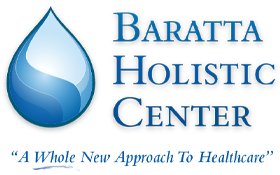Low Back Pain in Carmichael CA

The underlying causes of low back pain (sometimes referred to as lumbago) can be complex and are not always readily apparent. 90% of people afflicted by low back pain will recover completely within about six weeks. For the 10% of patients who do not recover within a few weeks, low back pain can be a painful, prolonged, costly and frustrating experience. Our clinic in Carmichael CA can help you.
Low Back Pain in Carmichael CA
Before discussing the specific types of low back pain, it is important to understand a few important principles.
Pain does not always equate to tissue damage. The severity of pain from low back problems is often unrelated to the extent of physical damage present. For example, a simple pulled muscle in the low back can cause excruciating pain that can limit one's ability to walk or even stand, whereas a even a large herniated disc can be completely painless.
Diagnosis is often difficult. There are many anatomical structures in the low back that can cause severe lower back pain and/or pain that radiates into the legs and/or feet.
These include:
- Soft tissues, such as muscles, ligaments and tendons
- Bones, which provide the structural building blocks of the spinal column
- Facet joints, which allow the spine move
- Discs (the outer rim of the disc, the annulus, can be a source of significant low back pain due to its rich nerve supply and tendency towards getting damaged)
- Nerves, which branch out from the spinal cord in the low back and innervate the legs and feet
All of the above structures are interwoven to make up the structure of the spine. During embryological development there is a great deal of overlap of nerve supply to all of these structures making it nearly impossible for the brain to distinguish between problems with one structure versus another. For example, a torn or herniated disc can feel identical to a bruised muscle or torn ligament.
Diagnostic accuracy is important. Getting an accurate diagnosis as to the underlying cause of one's pain is important. For example, it's not enough to know that one has sciatica - it is also important to determine the underlying cause of the sciatica, such as a herniated disc or spinal stenosis, in order to determine the best treatment options.
Low back pain is a personal experience. Unlike many other medical conditions, the experience of low back pain is not the same for everyone. For example, two people can have the exact same condition but for one it is incapacitating and for the other it is a mere nuisance. In fact, for most people a spinal abnormality (such as a degenerated disc that can be seen on an MRI scan) is painless. Other factors - both physical and psychological - often contribute to a person's experience of low back pain.
When determining the underlying cause of low back pain, both the type of low back pain (a description of how the pain feels) and the area of pain distribution (where the pain is felt) help guide the physician in making a preliminary diagnosis and determining the appropriate treatment plan.
Getting an accurate diagnosis of the cause of low back pain is often more challenging than many people expect and often will involve a combination of a thorough patient history and physical exam as well as diagnostic tests. The history and physical exam are used to help determine if a patient's lower back pain is more likely to be caused by a soft tissue (muscle, ligament or tendon) problem that will likely heal itself or a more serious underlying medical condition, such as fracture, infection or tumor.
By the time a physician orders any diagnostic tests such as an x-ray or MRI scan, he or she will usually have a strong suspicion as to the probable cause of the patient's low back pain and the diagnostic test is used to confirm it and provide more detail.
It is important to note that patients with the following symptoms could have a serious medical condition and should be evaluated immediately:
- Fever and chills
- History of cancer with recent weight loss (or unexplained weight loss)
- Severe trauma
- Significant leg weakness
- Sudden bowel and/or bladder incontinence - either difficulty passing urine or having a bowel movement, or loss of control of urination or bowel movement
- Severe, continuous abdominal pain and back pain
Axial low back pain can vary widely. It can be a sharp or dull pain, it can be felt constantly or intermittently, and the pain can range from mild to severe. The most common type of axial back pain is "mechanical" and is characterized as:
- Low back pain that gets worse with certain activities (e.g. certain sports)
- Low back pain that gets worse with certain positions (e.g. sitting for long periods)
- Low back pain that is relieved by rest
Axial pain represents the most common type of low back pain, and it is usually non-specific - meaning that the anatomical structure responsible for the pain need not be identified because symptoms are usually self limited and resolve.
Axial pain is confined to the low back area. Unlike other low back problems, this type of pain does not travel into the buttock, legs and feet, or other areas of the body.
Diagnosis of axial back pain
The exact diagnosis as to which structure is causing the low back pain rarely has significance to treatment. Only in chronic and severe cases is further evaluation and diagnosis helpful.
With axial pain, the presence of an anatomical lesion that can be seen on an MRI scan, such as a herniated disc may have nothing to do with the low back pain episode. This is part of what makes diagnosis difficult. A variety of structures in the low back can cause axial or mechanical lower back pain, such as a herniated disc and damage to soft tissues - muscles, ligaments, and tendons - and it is often difficult to identify which anatomical structure(s) is the underlying cause of the patient's pain.
As a general rule of thumb, if the back pain is bad enough that it wakes one up from deep sleep, one should consult a physician to rule out possible serious conditions, such as an infection, tumor or fracture.
Treatment of axial low back pain
Once the possibility of a serious underlying medical condition as the cause of a patient's low back pain is ruled out, treatment is conservative (non-surgical) and may include one or a combination of the following:
- A short period of rest (e.g. one or two days)
- Physical therapy and active exercise and stretching
- Ice and/or heat application for activity related pain relief
- Appropriate medications for pain relief
The natural history of axial low back pain is that with time the symptoms get better, and about 90% of patients with axial low back pain recover within six weeks. If axial low back pain persists for more than six to eight weeks, then additional testing and/or injections may be useful in diagnosing and treating the source of the low back pain. Fusion and disc replacement surgery options are discussed elsewhere on this site.
It should be emphasized that laminectomy and discectomy surgery is rarely recommended for axial low back pain and is unpredictable as to its successful outcome. This type of back surgery is reserved for pain secondary to compression of the spinal nerve roots or sac (see radicular pain).
The surgical and non-surgical treatment of chronic axial back pain (e.g. lasts more than six weeks), is somewhat controversial and beyond the scope of this article. More can be read about ongoing axial back pain in the degenerative disc disease and chronic pain sections of this site.
Low Back Pain with Referred Pain
This type of low back pain can vary widely with regards to severity and quality. It tends to be achy, dull and migratory (moves around). It tends to come and go and often varies in intensity. It can result from the identical injury or problem that causes simple axial back pain and is often no more serious.
Area of pain distribution
Referred pain is usually felt in the low back area and tends to radiate into the groin, buttock and upper thigh. The pain often moves around, and rarely radiates below the knee. This type of low back pain is not as common as axial low back pain or radicular pain (sciatica).
Referred pain is analogous to the pain that radiates down the left arm during a heart attack. It is the result of the extensive network of interconnecting sensory nerves that supply many of the tissues of the low back, pelvis and thigh.
An injury to any of these structures can cause pain to radiate - or be "referred" - to any of the other structures. It is important to understand that this type of pain is not due to "pinched nerves".
Referred pain is analogous to the pain that radiates down the left arm during a heart attack. It is the result of the extensive network of interconnecting sensory nerves that supply many of the tissues of the low back, pelvis and thigh.
An injury to any of these structures can cause pain to radiate - or be "referred" - to any of the other structures. It is important to understand that this type of pain is not due to "pinched nerves".
Diagnosis of referred low back pain
Unfortunately, the brain cannot determine the specific source of the pain. A careful history and physical exam by an experienced spine specialist can usually distinguish this type of pain from radicular pain, or pain that radiates down the leg along the specific course of a compressed spinal nerve. The distinction between referred pain and radicular pain is critical because the treatment of the two types of pain varies considerably.
Treatment of referred low back pain
In general, referred pain is treated with the same types of conservative care as axial back pain and will frequently diminish as the low back problem resolves. Once the possibility of a serious underlying medical condition as the cause of a patient's low back pain is ruled out, treatment of referred low back pain is conservative (non-surgical) and may include one or a combination of the following:
- A short period of rest (e.g. one or two days)
- Physical therapy, active exercise and stretching
- Ice packs and/or hot pads
- Appropriate medications for pain relief
If the above treatments do not successfully reduce the patient's pain to a manageable level, then additional non-surgical treatments may be tried. Laminectomy and discectomy surgery (back surgery aimed at decompressing the spinal nerve sac or individual spinal nerve roots) is often unsuccessful in treating referred pain. For cases of chronic severe low back pain, with or without referred leg pain, further testing and evaluation with discography (injection of the discs to determine if they are the pain generators) may be considered depending upon the treatment options being considered by the treating spinal specialist.
Types of pain
Radicular pain is often referred to as radiculopathy, and in lay terms is often described as sciatica. This type of pain is often deep and steady, and can usually be reproduced with certain activities and positions, such as sitting or walking. The pain usually follows the involved dermatome (the area of distribution of the leg covered by the specific nerve) - in the leg, this is usually the sciatic nerve. Radicular pain can be accompanied by numbness and tingling, muscle weakness and loss of specific reflexes.
Area of pain distribution
Radicular pain radiates into the lower extremity (thigh, calf, and occasionally the foot) directly along the course of a specific spinal nerve root. The most common symptom of radicular pain is sciatica (pain that radiates along the sciatic nerve - down the back of the thigh and calf into the foot). Sciatica is one of the most common forms of pain caused by compression of a spinal nerve in the low back. It may result from compression of the lower spinal nerve roots (L5 and S1).
With this condition, the leg pain is typically much worse than the low back pain, and the specific areas of the leg and/or foot that are affected depends on which nerve in the low back is affected. Compression of higher lumbar nerve roots such as L2, L3 and L4 can cause radicular pain into the front of the thigh and the shin.
Diagnosis of radicular pain
A radiculopathy is caused by compression, inflammation and/or injury to a spinal nerve root in the low back. Causes of this type of pain, in the order of prevalence, include:
- Herniated disc with nerve compression - by far the most common cause of radiculopathy
- Foraminal stenosis (narrowing of the hole through which the spinal nerve exits due to bone spurs or arthritis) - more common in elderly adults
- Diabetes
- Nerve root injuries
- Scar tissue from previous spinal surgery that is affecting the nerve root
Sciatica, the term commonly used to describe radicular pain along the sciatic nerve, describes where the pain is felt but is not an actual diagnosis. The clinical diagnosis is usually arrived at through a combination of the patient's history (including a description of the pain) and a physical exam. Imaging studies (MRI, CT-myelogram) are used to confirm the diagnosis and will typically show the impingement on the nerve root.
OFFICE HOURS
Monday
8:30am - 6:00pm
Tuesday
8:30am - 6:00pm
Wednesday
8:30am - 6:00pm
Thursday
8:30am - 6:00pm
Friday
Closed
Saturday
Closed
Baratta Holistic Center
6728 Fair Oaks Blvd #300
Carmichael, CA 95608




